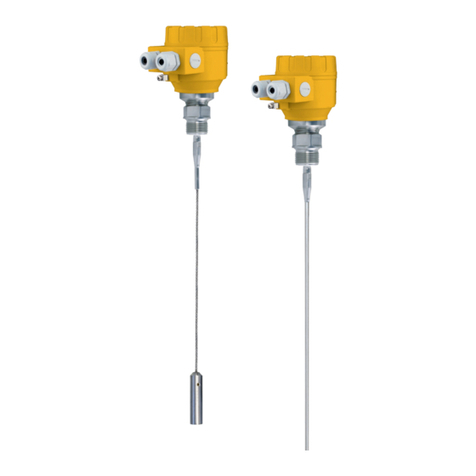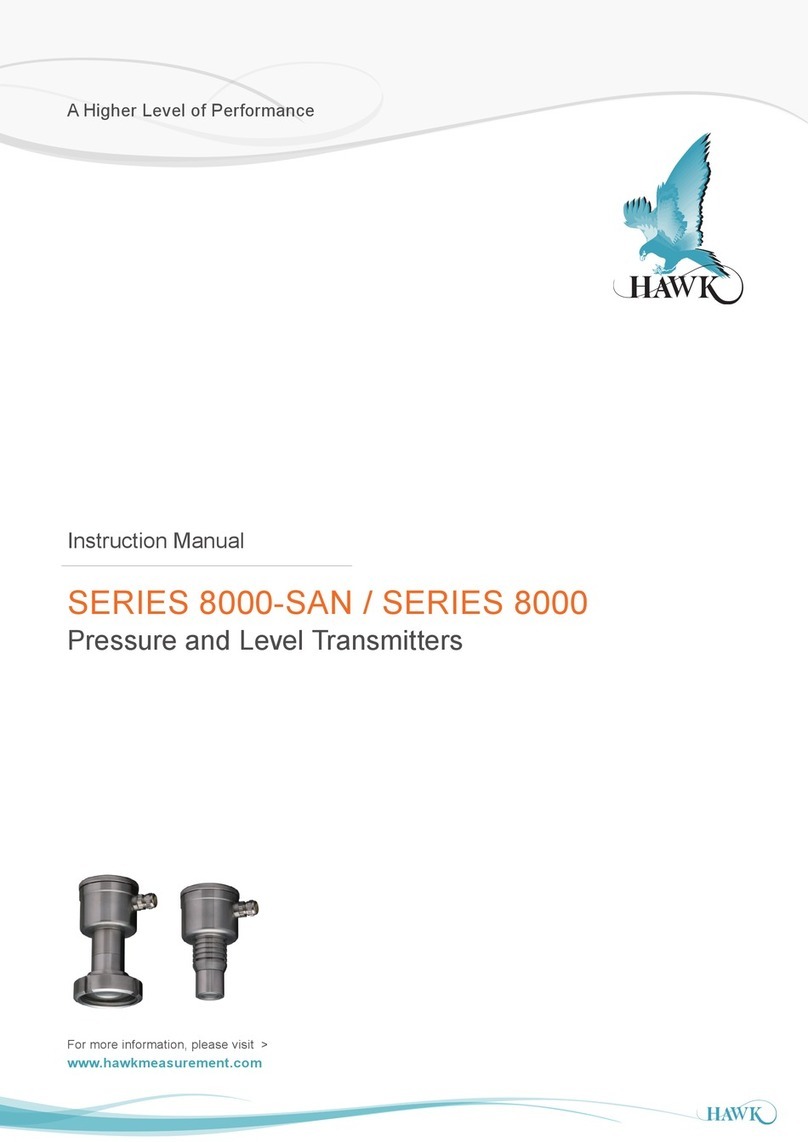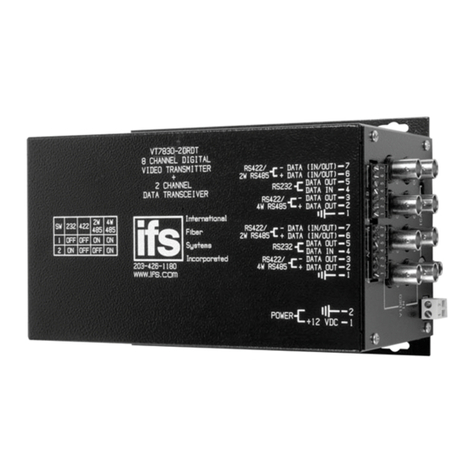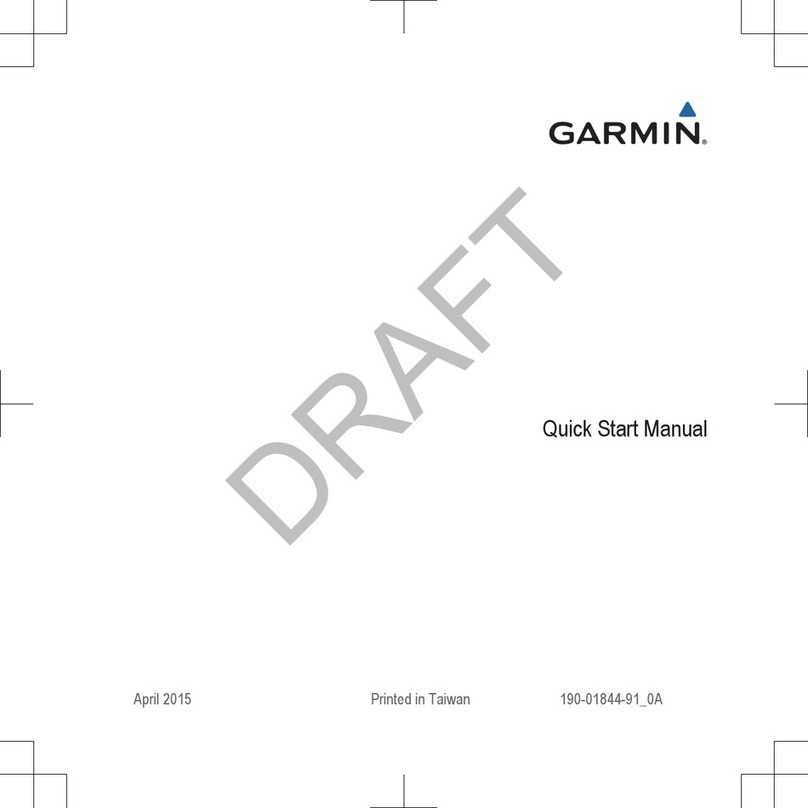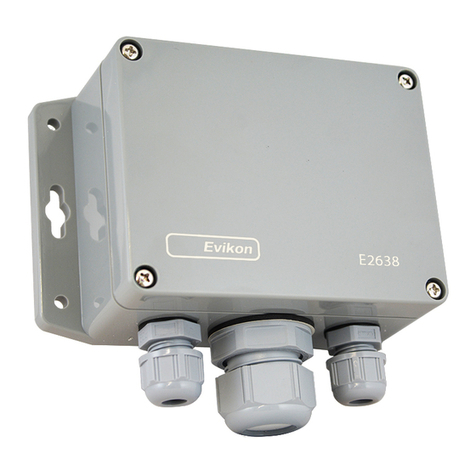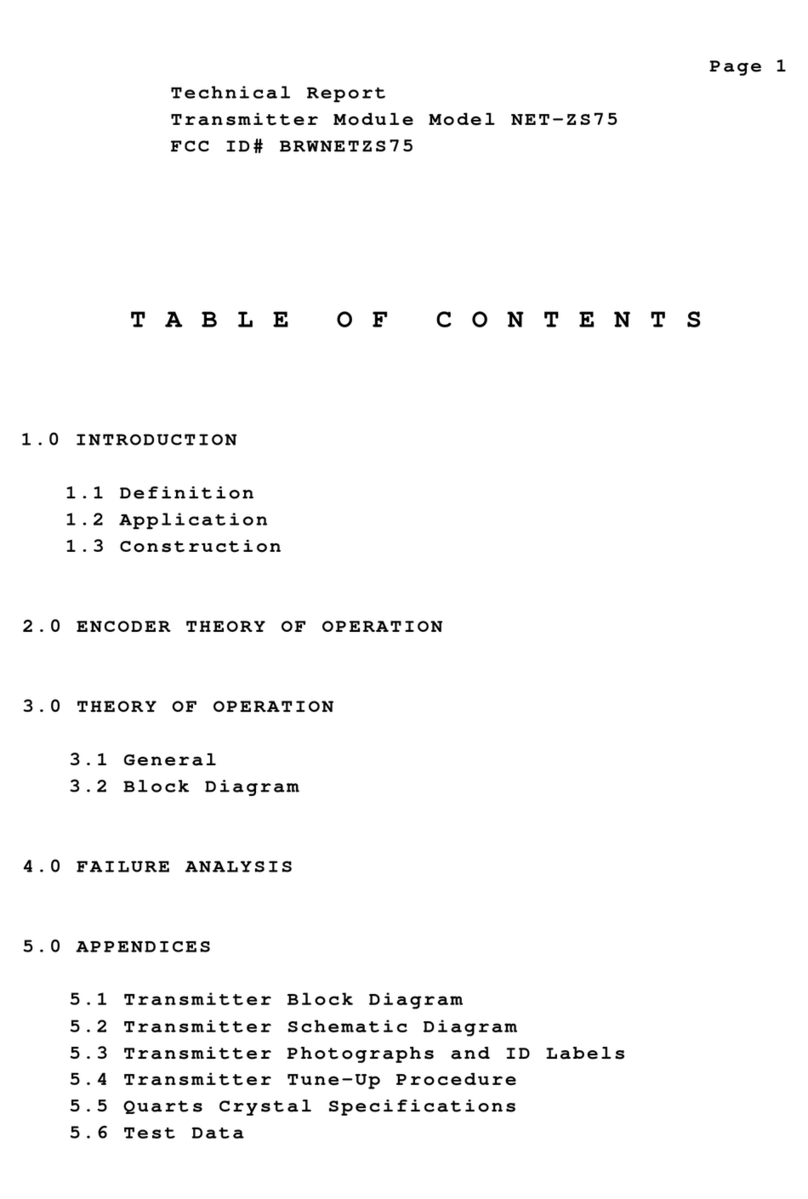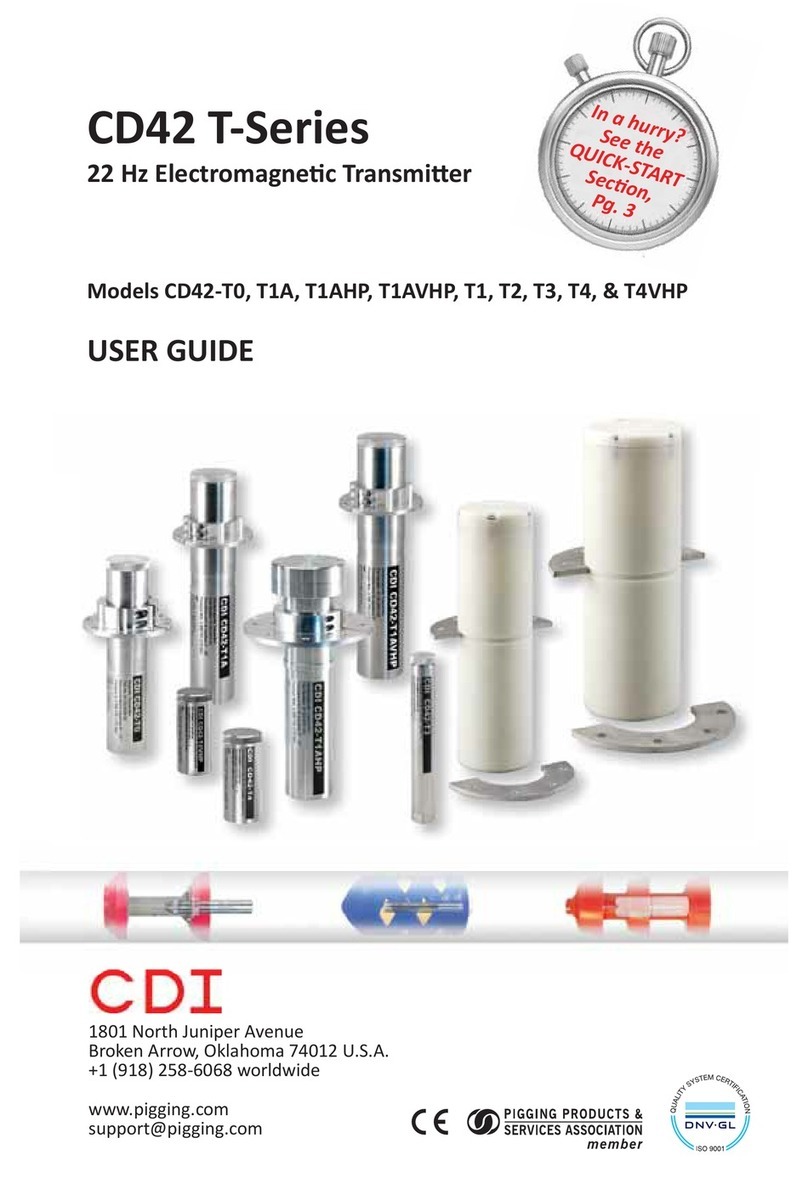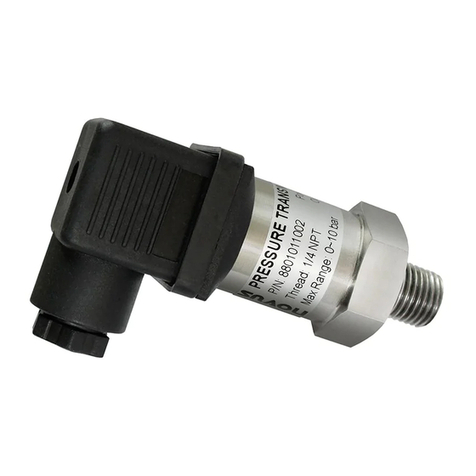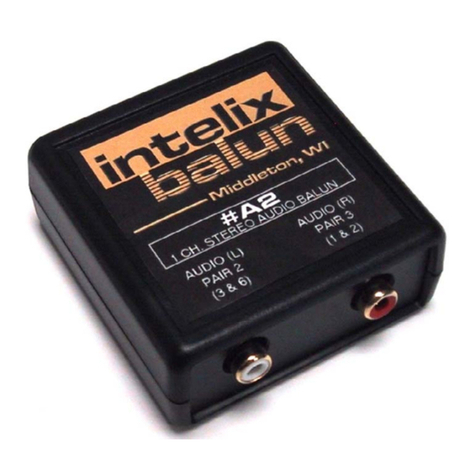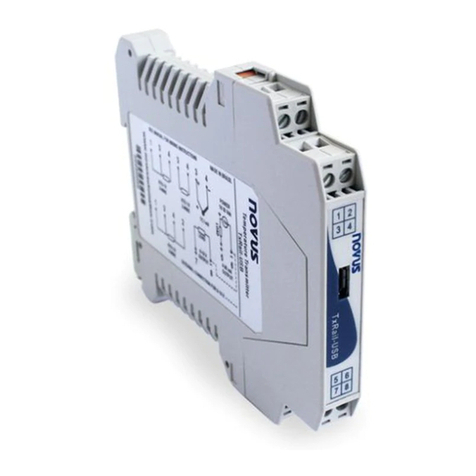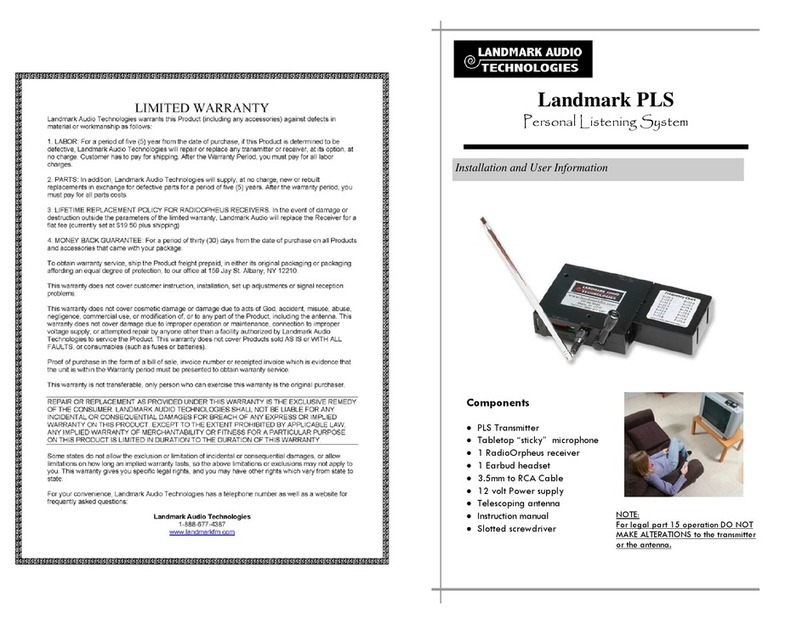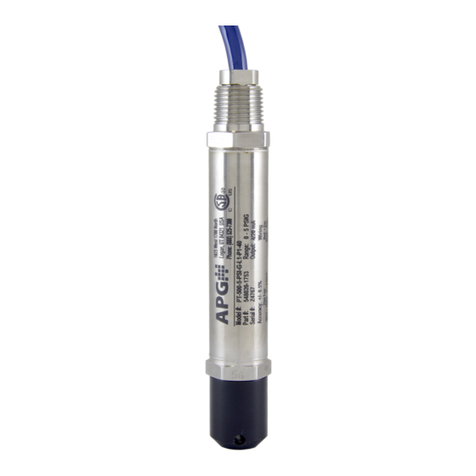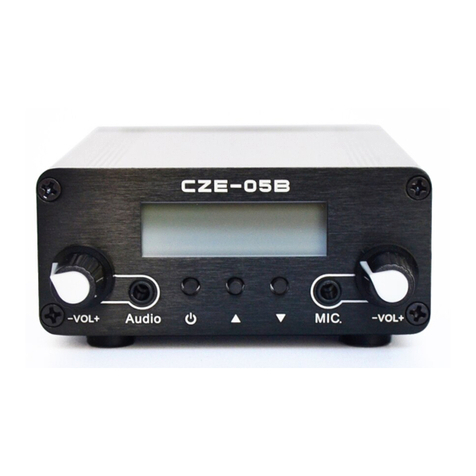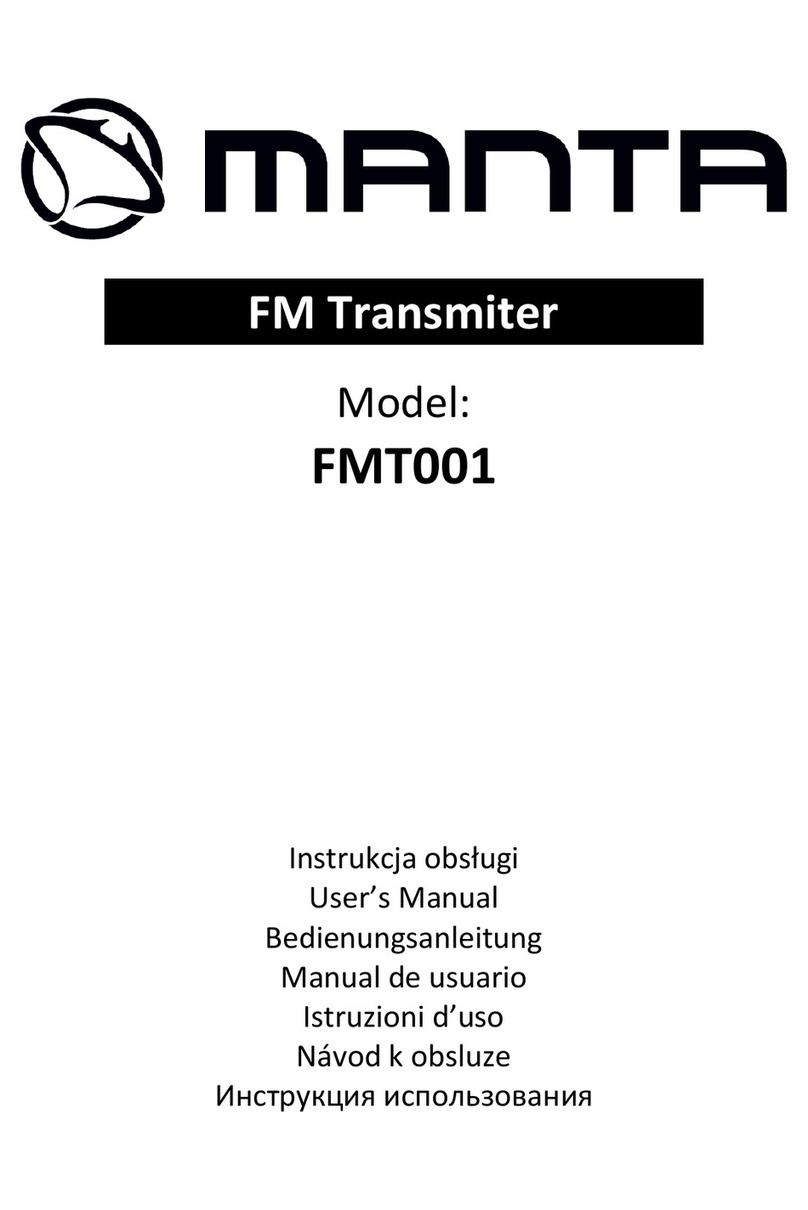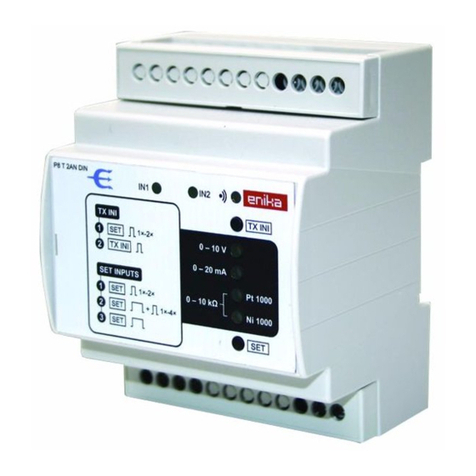SwissPhone I.SITE III User manual

www.swissphone.com
User Manual
I.SITE III
Version 1.1

I.SITE III User Manual
© SWISSPHONE Wireless AG Version 1.1
Page 1/20
Document History
Version history:
Version Date Created by Comments
0.1 23 Jul 2013 OSU First edition
1.0 25 Sept 2013 OGD Revised and expanded
1.1 13 Feb 2014 OGD FCC/IC notices added

I.SITE III User Manual
© SWISSPHONE Wireless AG Version 1.1
Page 2/20
Contents
1
Abbreviations 3
2
Introduction 4
2.1
Purpose 4
2.2
General Description 4
2.3
Functional Description 4
2.3.1
Design 4
2.3.2
Optional Features 5
2.3.3
External Connections and Displays 5
2.3.4
Possible Product Combinations 6
2.4
Usage Examples 7
3
System Description 8
3.1
Housing and Electronics 8
3.2
Protective Measures 8
3.3
Antenna System 8
3.4
I.SITE III Hardware Components 8
3.4.1
Power Supply 8
3.4.2
Transmission Unit 9
3.4.3
Controller Board 9
3.4.4
Displays, Connections, and Operating Controls 10
3.4.5
Backup Battery 11
3.5
Operating Modes 11
3.5.1
I.SEARCH Slave Mode 11
3.5.2
SAGEM Mode 11
3.5.3
ASCII Mode 11
3.5.4
Programming and Test Mode 11
4
Communications Interface 12
4.1
I.SEARCH Interface 12
4.2
ASCII Interface 12
4.3
Setting up Digi Connect 13
4.3.1
Changing the IP Address 13
5
Technical Data 14
5.1
Item Numbers 15
6
Safety Notices 16
6.1
General 16
6.2
Important Notes on Device Operation 16
6.3
General Safety Measures 16
6.4
Precautionary Measures for Handling the Battery 16
6.4.1
Battery Handling 16
6.4.2
Battery Storage 17
6.5
Earthing and Lightning Surge Protection 17
6.6
Maintenance Schedule 17
7
EU Declaration of Conformity 18
8
Notes for Customers from the U.S. and Canada 19

I.SITE III User Manual
© SWISSPHONE Wireless AG Version 1.1
Page 3/20
1 Abbreviations
AC Alternating Current
CPU Central Processing Unit
DFSK Digital Frequency Shift Keying
EC European Community
EMS Electromagnetic Safety
EMC Electromagnetic Compatibility
ETSI European Telecommunications Standards Institute
GIS Graphical Information System
HD Hard Disk
HF High Frequency
HW Hardware
Hz Hertz (SI unit for frequency)
LAN Local Area Network
LED Light Emitting Diode
POCSAG Post Office Code Standardization Advisory Group
RAM Random Access Memory
R&TTE Radio and Telecommunications Terminal Equipment
SW Software
UHF Ultra High Frequency
USB Universal Serial Bus
VAC Voltage Alternating Current
VDC Voltage Direct Current
VGA Video Graphics Array
VHF Very High Frequency

I.SITE III User Manual
© SWISSPHONE Wireless AG Version 1.1
Page 4/20
2 Introduction
2.1 Purpose
This manual describes how to install and operate the I.SITE III
POCSAG paging transmitter.
2.2 General Description
POCSAG transmitter with LAN connection:
The I.SITE III is a POCSAG transmitter for digital alarm systems. The transmitter is encased in a
rugged IP65-compliant housing, making it suitable for outdoor use. It is controlled via Ethernet
LAN, enabling the transmitter to be located remotely. POCSAG messages are created internally
and sent via the scalable transmission unit at 1...25W.
2.3 Functional Description
2.3.1 Design
The I.SITE III consists of the following four functional blocks:
•Power supply - AC/DC converter with battery charging port and deep discharge
protection
•Transmission unit
•Controller board
•Backup battery (optional)
Device control is provided via Ethernet LAN (RJ45). POCSAG messages are created internally
and sent via the transmission unit (max. 25 W). Three local digital potential-free inputs and one
service contact are available optionally. These can directly trigger POCSAG messages and/or
additional status messages to the alarm server. Multiple I.SITE III devices can operate in parallel
via LAN as long as the radio coverage areas do not overlap. POCSAG messages are sent
asynchronously. For simulcast communication, use the I.SITE II together with I.SEARCH.
Power supply Backup battery
(optional)
Transmission
unit
Controller board

I.SITE III User Manual
© SWISSPHONE Wireless AG Version 1.1
Page 5/20
2.3.2 Optional Features
Up to three add-on optional features are available for the I.SITE III base transmitter:
•Backup battery
•Service contact (door)
•3x input contacts
If you require one or more of these optional features, make sure to specify these when ordering
the I.SITE III. These features can only be added when you purchase the base device. There are a
number of Swissphone settings to prevent unauthorized use of these features. For further
information, please refer to the “Item Numbers” chapter below.
2.3.3 External Connections and Displays
1
1 Cable feed
-
throughs
for
- Power cable (230V/50Hz)
- Ethernet (LAN)
- Input contacts (optional)
2 LED display
- Status (green / heartbeat pulse
1Hz)
- PTT (yellow / on when PTT
signal present)
- Error (red / on when TX error
occurs /
AC Fail & ACCU Low /
Test Mode)
3 Antenna connection
N-type (female) 50Ω
2
3

I.SITE III User Manual
© SWISSPHONE Wireless AG Version 1.1
Page 6/20
2.3.4 Possible Product Combinations
1. I.SEARCH with I.SITE III
The transmitter runs in I.SEARCH Slave mode (connection via Slave protocol for
Master-Slave operation).
With the I.SEARCH Slave protocol, you can:
oTransmit POCSAG-encoded messages and receive transmitter fault status
messages at the same time.
oQuery the transmitter status or data.
oEstablish a direct connection to the Tait transmission unit.
With the Email SMTP protocol, you can receive messages about changes to the input
status. For this, the customer needs to configure the Digi Connect (Ethernet module
with email server) accordingly.
2. I.SITE III in stand-alone operation
The transmitter runs in ASCII mode (connection via ASCII Simple protocol).
With the ASCII Simple protocol, you can:
oTransmit text messages and receive transmitter fault status messages at the
same time.
oQuery the transmitter status or data.
oEstablish a direct connection to the Tait transmission unit.
With the ASCII Simple protocol, you can receive input status events. For this, the
target application needs to keep the LAN connection open so that the input status
events can be received.
With the Email SMTP protocol, you can receive messages about changes to the input
status. For this, the customer needs to configure the Digi Connect (Ethernet module
with email server) accordingly.
The described proprietary Swissphone Telecom AG protocols for integrating the I.SITE III into
your solutions are available to third-party suppliers on request.

I.SITE III User Manual
© SWISSPHONE Wireless AG Version 1.1
Page 7/20
2.4 Usage Examples
I.SEARCH with I.SITE III (Slave protocol):
I.SITE III in stand-alone mode (ASCII Simple protocol):

I.SITE III User Manual
© SWISSPHONE Wireless AG Version 1.1
Page 8/20
3 System Description
3.1 Housing and Electronics
The I.SITE III is shipped in a rugged metal housing. All electrical connections are provided as
water-proof cable feed-throughs.
All of the electronics are integrated into a rugged, IP65-protected wall housing. This housing is
suitable for indoor and outdoor installation alike.
3.2 Protective Measures
You must connect the device to your mains grid’s protective earth (neutral point located directly
after input in housing).
3.3 Antenna System
The antenna to be deployed requires an impedance of 50Ωat a suitable user frequency. Use an
N-type connector to connect the antenna to the housing.
Swissphone recommends the use of Kathrein antenna products.
3.4 I.SITE III Hardware Components
1 Power supply - AC/DC converter with battery charging port and deep discharge protection
2 Transmission unit (TX for max. 25W)
3 Controller board (control unit with connections for LAN and input contacts)
4 Backup battery (12V/2.3Ah) optionally available
3.4.1 Power Supply
The power supply provides an output voltage of +13.8VDC. The input voltage must be between
90VAC and 240VAC at 50-60Hz.
2
4
1
3

I.SITE III User Manual
© SWISSPHONE Wireless AG Version 1.1
Page 9/20
3.4.2 Transmission Unit
The Tait TM8105 transmission module is approved for ETSI 300113, which makes it suitable for
local radio broadcasting. The transmitter is designed for digital data transmission. The modulation
method employed for this is DFSK (Direct Frequency Shift Keying).
The following four transmission units are available.
G
e
neral:
In order to avoid damaging the transmitter, ensure the following:
•The prescribed power rating of 90-240VAC, 50-60Hz must never be exceeded.
•The high frequency output must be connected at 50Ω.
•Proper earthing and protection against lightning surges must be provided.
If an antenna is being used, we recommend to mount it several meters removed from the
transmitter to avoid feedback.
Note:
You can configure the output strength of the transmission module to suit your requirements.
Excess Temperature Protection:
When the operating mode is ‘Continuous Transmission’ and the environmental temperature is
above 55°C, the transmitter automatically reduces its output strength to a safe operating level.
3.4.3 Controller Board
The controller board handles communication via the Ethernet LAN interface, acting as a server for
external clients and accepting transmission requests. These requests trigger POCSAG
transmission via the transmission unit. Additionally, status and fault signals coming from the
transmission unit and the power supply are compiled and displayed on the controller board, as well
as being reported back via the Ethernet LAN interface.
The board is powered using a 3.3.VDC voltage regulator.
In order to provide more informative transmitter monitoring, every transmission is accompanied by
a range of status messages:
Status Information
SI01-3 (optional) Input I1 edge-triggered, potential-free 5-15V, debounced (open/closed)
SI04 (optional) Service contact (door contact, open/closed)
SI05 Operating temperature in degrees Celsius, decimal two-digit
SI06 Fault status (when fault messages present)
Fault Status Messages
FS01 Unstable transmission frequency (PLL Unlocked)
FS02 Fault in transmission unit TX (High FWD/Low REV Power or TX Excess
Temperature)
FS03 No operating voltage present (AC Power Fail)
FS04 (optional) Operating voltage of backup battery below threshold value (ACCU Low)
FS05 Incorrect transmitter keying (TX Not Allowed)
Frequency Frequency
Transmission
strength Channel spacing Standard
VHF 4m 66-88MHz 1 to 25W 12.5/20/25kHz ETSI 300113
VHF 2m 136-174MHz 1 to 25W 12.5/20/25kHz ETSI 300113
UHF 400-470 MHz 1 to 25W 12.5/20/25kHz ETSI 300113
UHF 450-530 MHz 1 to 25W 12.5/20/25kHz ETSI 300113

I.SITE III User Manual
© SWISSPHONE Wireless AG Version 1.1
Page 10/20
3.4.4 Displays, Connections, and Operating Controls
1) Input contacts (IN1-IN3):
There are three potential-free input contacts at 5-15V, 5mA. Use these to connect items such as
active emergency buttons, sensors, or door/window contacts where the status change is to be
reported upon triggering (open/closed or open&closed).
If you wish to connect a passive contact (switch/button), configure the solder bridge jumpers as
follows:
Contact
BR40
BR41
BR42
BR43
BR44
BR45
BR46
BR47
BR48
IN1
CLOSE
D
OPEN CLOSE
D
X X X X X X
IN2
X X X CLOSE
D
OPEN CLOSE
D
X X X
IN3
X X X X X X CLOSE
D
OPEN CLOSE
D
2) Ethernet LAN Connection
This is the communications interface. Connect an RJ45 Ethernet LAN cable to this port.
3) Display Elements on Controller Board
AC FAIL Mains power failure
ACCU LOW Battery voltage has dropped below 12V
PLL ERROR PLL error in transmission unit
TX ERROR Excess temperature in transmission unit / faulty antenna connection
CPU STATE Controller state (heartbeat pulse)
TX DATA Data transmission is live (weak glow when idle)
PTT Transmitter keying is active
VCC Controller board is receiving power
Reset button (red): Use the Reset button to restart the I.SITE III unit from scratch. All your
settings will be retained.
PTT button (black): Use the PTT button to test the transmission quality (transmitter keying).
1
2
3

I.SITE III User Manual
© SWISSPHONE Wireless AG Version 1.1
Page 11/20
Protocol Mode rotary dial: Use this dial to select one of the available operating modes. Detailed
descriptions of these are provided in the following chapter.
3.4.5 Backup Battery
When there is a power failure, the optional 12V backup battery (2.3Ah) provides power to the
transmission module and the controller board.
3.5 Operating Modes
The I.SITE III provides a number of different operating modes. These are selected via the 16-step
hex rotary dial on the controller board. Following a reset, the position of the operating mode dial is
detected and the transmitter is set to the corresponding mode. The available operating modes are
described below. All other modes are categorized as programming and test modes. To configure
the modes, you need to use the configuration software.
3.5.1 I.SEARCH Slave Mode
0x2: The transmitter is set to the I.SEARCH Slave protocol.
After start-up or reset, the default operating mode is briefly indicated via the LEDs.
Behavior / display:
I.SEARCH Slave Mode:
The green LED emits three short flashes.
3.5.2 SAGEM Mode
0xD: The transmitter is set to the SAGEM protocol (type: RM 540-E). Use this for sending text
messages. This mode is only available with the I.SITE SDIS version.
After start-up or reset, the default operating mode is briefly indicated via the LEDs.
Behavior / operating mode display during start-up:
SAGEM Mode:
The green LED emits two short flashes, followed by one flash of the red LED.
3.5.3 ASCII Mode
0xE: The transmitter is set to the ASCII Simple protocol. With this, you can instantly send ASCII-
encoded messages.
After start-up or reset, the default operating mode is briefly indicated via the LEDs.
Behavior / operating mode display during start-up:
ASCII Mode:
The green LED emits three short flashes, followed by one flash of the red LED.
3.5.4 Programming and Test Mode
0xF: In this mode, the Programming and Test protocol is used.
After start-up or reset, the default operating mode is briefly indicated via the LEDs.
Behavior / operating mode display during start-up:
Programming/Test Mode:
The green and red LEDs emit alternating flashes
at an increasing speed until the red LED lights up continuously.
This mode is displayed as a fault.
With the I.SITE III, programming can only be performed via Ethernet using the following
IP address and port.
IP address: 192.168.1.3
Port: 6611

I.SITE III User Manual
© SWISSPHONE Wireless AG Version 1.1
Page 12/20
4 Communications Interface
Setup: I.SEARCH with I.SITE III (I.SEARCH interface):
Communications interface for ‘Master-Slave’ operation via Slave protocol.
Setup: I.SITE III stand-alone operation (ASCII interface):
Communications interface for ‘Stand-Alone’ operation via ASCII Simple protocol for external
systems.
4.1 I.SEARCH Interface
Set the I.SITE III’s operating mode dial to ‘2’. In this mode, the I.SITE III can only accept requests
from an I.SEARCH via LAN.
During start-up, the green LED emits three short flashes. Whenever a message is being
transmitted, the yellow LED lights up.
4.2 ASCII Interface
Set the I.SITE III’s operating mode dial to ‘E’. In this mode, the I.SITE III can only accept requests
from external systems.
During start-up, the green LED emits three short flashes. Whenever a message is being
transmitted, the yellow LED lights up.

I.SITE III User Manual
© SWISSPHONE Wireless AG Version 1.1
Page 13/20
4.3 Setting up Digi Connect
4.3.1 Changing the IP Address
This is the I.SITE III’s default IP address: 192.168.1.3
Use a web browser to access the I.SITE III’s IP address. The following window appears:
Enter the following access data:
Username: root
Password: dbps
Select ‘Configuration’ > ‘Network’ to change the IP address or to set it to DHCP. Click ‘Apply’ to
save your changes.
In the ‘Network Services Settings’ field (‘Configuration’ > ‘Network’), you can
block and open individual ports. As a general recommendation, only leave those ports open
that are actually being used. Click ‘Apply’ to save your
changes.
This is the TCP/IP port number for the I.SITE III: 6611

I.SITE III User Manual
© SWISSPHONE Wireless AG Version 1.1
Page 14/20
5 Technical Data
Transmission unit (TX)
Frequency bands VHF4m / VHF2m /
UHF 66-88MHz / 136-174MHz / 400-470MHz / 450-530MHz
Transmitting power Adjustable ex works for: 1 to 25 W
Channel separation 12.5/20/25kHz
POCSAG Transmission rate 512, 1200, 2400 baud
Antenna port N-Type (female) 50Ω/port for external antenna
Duty cycle 33% at 25W (@ 131°F)
Interface
LAN 1x RJ45 (100 Mbps)
Call dog Proprietary call logs (available on request)
Control PC software or through third-party providers
Fault status reports
FS01 Unstable transmitting frequency (PLL Unlocked)
FS02 Fault in transmission unit TX (High FWD/low REV power or TX
excess temperature)
FS03 No operating voltage present (AC Power Fail)
FS04 (optional) Operating voltage of backup battery below threshold value
(ACCU Low)
FS05 Incorrect transmitter keying (TX Not Allowed)
General
Backup battery (optional)
12 V / 2,3 Ah
charging port + battery low display + deep discharge
protection
Input contacts (optional)
Three contact inputs (E1, E2, E3 (open/close)) for triggering
messages (edge triggered, potential-free 5 - 15 V, debounced
to 100 ms)
Service contact (optional) One door contact (open/close) for triggering messages during
servicing
Operating temperature range -4 °F to +131 °F // -20 °C to +55 °C
Input voltage (AC) 90-264VAC
Power consumption (max. 230 V) 5 W (stand-by), 75 W (sending at max. 25 W)
Protection class IP65
Dimensions (H x W x D) 15.8 x 8.3 x 4.7 inches // 400 x 210 x 120 mm
Weight 264.75 oz. // 7.5 kg (without optional backup battery)
Conformity
Data transmission ETS 300 279, ETSI 300 113
Electromagnetic compatibility EN 301489-05, EN55022
Security EN 60950

I.SITE III User Manual
© SWISSPHONE Wireless AG Version 1.1
Page 15/20
5.1 Item Numbers
The following base transmitters and optional features are available for ordering:
Item numbers Transmitter
VHF4m 0722263
VHF2m 0722262
UHF 400-470MHz 0722261
UHF 450-530MHz 0722264
Item numbers options
Backup battery 0722128
Input contacts 0722129
Service contact 0722130

I.SITE III User Manual
© SWISSPHONE Wireless AG Version 1.1
Page 16/20
6 Safety Notices
6.1 General
The I.SITE III device should only be opened by authorized and qualified technicians. The
manufacturer is not liable in any way for damage or injuries stemming from non-compliance with
these safety notices or from improper use of the device.
6.2 Important Notes on Device Operation
This device is permitted for operation in Switzerland, Liechtenstein, and all member states of the
European Union.
Before operating this device, you need to obtain a suitable radio license from the applicable
public authority. The permitted frequency ranges and channel spacing vary from country to
country and must be observed.
6.3 General Safety Measures
•All devices must be serviced exclusively by suitably qualified service technicians.
•Only connect devices to the inputs and outputs of the I.SITE III that comply with the
corresponding safety guideline (EN 60950-1:2001).
•Always operate the device in a power grid with 90V-260VAC, 50-60Hz.
•Only operate the device in building locations where it is protected from lightning and
shielded from direct sunlight.
•Due to the danger of electrical shock, only open the I.SITE III housing if you have been
trained and certified by Swissphone to do so.
•Ensure that no humidity, liquid, or steam can enter the device. (In closed-door
environments, the device complies with protection class IP65.)
•Do not keep any liquids in close proximity to the device. Do not use liquid cleaning
agents. These may damage the device or cause electrical shocks.
•Do not install the device in close proximity to heat sources.
•Only use original parts or parts recommended by your dealer, as you may otherwise
cause personal injury or damage to the device. Ignoring this warning voids the device
warranty. Any alteration or repair of the device must be undertaken by a suitably
qualified technician.
6.4 Precautionary Measures for Handling the Battery
The battery (backup battery) is an optional feature and can be ordered as an add-on for the base
housing of the I.SITE III.
6.4.1 Battery Handling
•Never expose the battery to open flames.
•Ensure that there is no short circuit between the battery contacts.
•Never open up the battery.
•If the battery is damaged and dilute sulphuric acid spills onto your skin or clothes,
immediately rinse with water. If any dilute sulphuric acid touches your eyes,
immediately rinse them thoroughly and seek medical help.
•We recommend replacing the battery every 3-4 years.
•After all the battery power has been consumed, restore mains operation as soon as
possible to recharge the battery.

I.SITE III User Manual
© SWISSPHONE Wireless AG Version 1.1
Page 17/20
6.4.2 Battery Storage
•Do not store the battery in the vicinity of open flames.
•If the battery is out of use for an extended period of time, store it in a cool location
(above 0 °C).
•Recharge the battery at least once every six months.
•Do not place partially discharged batteries in storage.
Note: If you place the I.SITE III in storage for an extended period of time, there is no need to
disconnect the battery from the I.SITE III as the power supply will shut down the battery correctly.
6.5 Earthing and Lightning Surge Protection
Warning!
Proper earthing and adequate protection against lightning surges are vital in order to
prevent device damage.
Earthing and lightning surge protection are interconnected. The following categories apply here:
•Electrical earthing:
This describes an earthing system that conducts any surge current from the device’s
housing or other parts to the equipotential bonding of the building.
•HF earthing:
This describes an earthing system where HF power is diverted to earth. HF earthing
systems include shielding that contains or lessens the leakage of HF radiation.
•Lightning protection:
Proper lightning protection is crucial for ensuring the safe and reliable operation of a
communications system. This is closely linked to the building’s equipotential bonding.
The User Manual at hand does not contain in-depth recommendations and guidelines for the
earthing and lightning protection measures required for communications systems. Such
information can be obtained separately from a large number of expert sources. If you have any
doubts regarding the specific requirements, make sure to inform yourself accordingly.
6.6 Maintenance Schedule
The I.SITE III is based on the latest technological advances and features a software-based
controller. Therefore, it requires only very minor regular maintenance.
When maintenance is carried out, this should include the following tasks:
•Wipe down the device with a soft cloth.
•Check all functions.
•Check the battery condition.
•Check all electrical connections.
Note: We recommend replacing the battery at least once every 3-4 years.

I.SITE III User Manual
© SWISSPHONE Wireless AG Version 1.1
Page 18/20
7 EU Declaration of Conformity
The I.SITE III complies with all basic requirements of the European 1999/5/EC R&TTE guideline.

I.SITE III User Manual
© SWISSPHONE Wireless AG Version 1.1
Page 19/20
8 Notes for Customers from the U.S. and Canada
This device complies with Part 15 of the FCC Rules and with Industry Canada licence-exempt RSS
standard(s). Operation is subject to the following two conditions:
(1) this device may not cause harmful interference, and
(2) this device must accept any interference received, including interference that may cause
undesired operation.
Le présent appareil est conforme aux CNR d'Industrie Canada applicables aux appareils
radio exempts de licence. L'exploitation est autorisée aux deux conditions suivantes:
(1) l'appareil ne doit pas produire de brouillage, et
(2) l'utilisateur de l'appareil doit accepter tout brouillage radioélectrique subi, même si le brouillage
est susceptible d'en compromettre le fonctionnement.
FCC WARNING:
Changes or modifications made to this equipment not expressly approved by Swissphone may void the FCC
authorization to operate this equipment.
FCC Radio Frequency Interference Statement:
This equipment has been tested and found to comply with the limits for a Class A digital device, pursuant to
Part 15 of the FCC Rules. These limits are designed to providereasonable protection against harmful
interference when the equipment is operated in a commercial environment. This equipment generates, uses,
and can radiate radio frequency energy and, if not installed and used in accordance with the instruction
manual, may cause harmful interference to radio communications. Operation of this equipment in a
residential area is likely to cause harmful interference in which case the user will be required to correct
the interference at his own expense.
Table of contents
